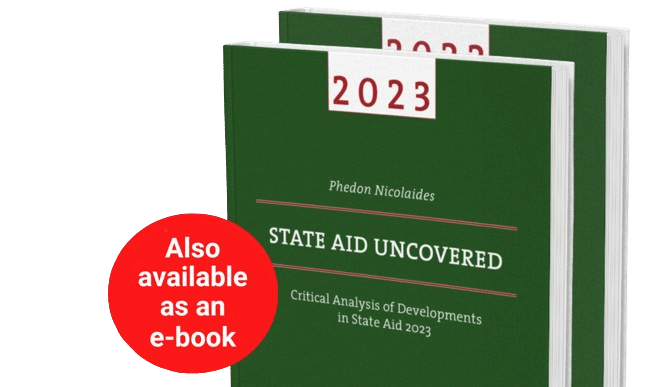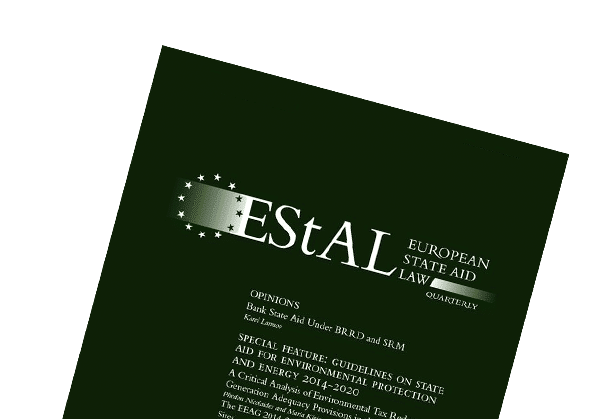
Calculating de minimis aid according to the average amount of aid received by undertakings is wrong.
Introduction
It appears that all Member States grant de minimis aid, even though some tend to grant it more easily than others. De minimis aid can be used to subsidise any costs, including those which are not eligible under other State aid rules. The typical example is operating aid [however, the de minimis regulation prohibits subsidization of certain costs such as export aid]. For this reason de minimis aid is attractive to Member States. It is also attractive because administratively de minimis aid is simple to disperse. There is no need to inform, let alone notify the Commission [except when the Commission explicitly asks for it].
However, mistakes happen. This article reviews one case where the Netherlands applied the de minimis regulation correctly and another case where Belgium applied it incorrectly.
Correct application of the de minimis regulation
Commission decision SA.36181 dealt with a Dutch scheme that subsidised fast-charge stations for electric vehicles.[1] The Commission looked into that scheme following a complaint. The arguments of the complaint and the assessment of the scheme are not of much interest. What is more interesting is how the Dutch authorities proved that the aid was compliant with the requirements of the de minimis regulation [Regulation 1407/2013].
The amount of State aid was very small; a mere EUR 195, on average, per charging point for three years. But calculation of the average is not enough. The Dutch authorities defined a precise methodology for calculating the precise amount of subsidy per charging point. Given that some beneficiary companies had more than one charging point, the Dutch methodology also provided the total subsidy per undertaking for three years. The maximum indicated subsidy for the undertaking that would receive the largest amount was under EUR 12,000.
As the Commission noted in the decision, according to Article 4 of the de minimis regulation “(38) only applies to aid of which it is possible to calculate precisely the gross grant equivalent of the aid ex ante without any need to undertake a risk assessment (“transparent aid”). “(39) The Dutch authorities provided for a methodology for calculating the monetary value of the usage fees foregone. Based on this methodology, it was possible to calculate the gross grant equivalent of the aid ex ante without undertaking a risk assessment. Therefore, this aid can be considered transparent within the meaning of the de minimis Regulation.”
One of the most important requirements of the regulation is that the granting authority checks beforehand that any de minimis award does not bring the total amount of de minimis aid received by the same undertaking during any three-fiscal-year period above the maximum of EUR 200,000.
Therefore, the Commission also ensured that “(41) the Dutch authorities confirmed that the total amount of public support granted to each of the beneficiaries under the measure at stake […], together with all other public support granted to the same beneficiaries as de minimis aid under the de minimis Regulation, irrespective of the form of such aid or the objective pursued, did not exceed the threshold contained in the de minimis Regulation (i.e. EUR 200 000 over any period of three fiscal years).The Dutch authorities also confirmed that for these companies the cumulation rules of the de minimis Regulation were complied with, as well as all other conditions of the de minimis Regulation were fulfilled”.
For these reasons, the Commission concluded that the Dutch scheme did not involve state aid in the meaning of Article 107(1) TFEU.
Do you know we also publish a journal on State aid?
The European State Aid Law Quarterly is available online and in print, and our subscribers benefit from a reduced price for our events.
Incorrect application of the de minimis regulation
Neither the Commission, nor the Court of Justice could conclude that a Belgian scheme which also involved very small amounts was compliant with the de minimis regulation.
On 13 September 2017, the Court of Justice found that Belgium had failed to recover incompatible aid from farmers and slaughterhouses. The Court, in its judgment in case C-591/14, Commission v Belgium, did not provide any new interpretation on recovery obligations.[2] However, it did highlight the complexity of granting correctly de minimis aid.
When Member States are requested to recover incompatible aid, often they deduct from the recoverable amount the de minimis amount. Belgium had calculated the total amount of aid, then divided that amount by the number of economic operators [i.e. undertakings] and concluded that the resultant amount was below the de minimis threshold.
The Court first rejected the claim advanced by Belgium that it was difficult to recover the aid. The Court found that “(45), the Kingdom of Belgium has not demonstrated that it was impossible for it to identify in practice the actual beneficiaries of the aid at issue.”
Then it went on to consider the methodology by Belgium to calculate the de minimis amount [that would not have to be recovered]. “(46) As regards the argument to the effect that the de minimis thresholds were not exceeded, it should be recalled that, in order to determine the beneficiary of State aid, it is necessary to identify the undertakings which actually enjoyed the benefit of it […] [the] case-law precludes calculating the amount of the aid to be recovered by dividing the overall amount of the aid in equal shares between the economic sectors designated by the decision at issue, as the Kingdom of Belgium proposes in order to demonstrate that the de minimis thresholds were not exceeded.” “(47) Moreover, […], it is incumbent, […] , upon the Member State concerned, where failure to recover some or all of the aid at issue has been established, to substantiate the reasons why recovery is not required so far as concerns certain beneficiaries […]. Apart from the method of calculation, ruled out by the case-law cited in the previous paragraph, the Belgian Government does not provide any specific and concrete data justifying the conclusion that the de minimis thresholds are complied with in respect of the beneficiaries concerned.”
Another mistake often committed by Member States whenever they want to reduce the amount of recoverable aid by the de minimis amount is to take the total amount in a given three-year period, divide it by the number of beneficiaries and then claim that the derived average remains below EUR 200,000 [see for example the judgment in case T-52/12, Greece v Commission, paragraphs 194-204].[3] Not only does this method fail to ensure that none of the beneficiaries actually receives an amount exceeding EUR 200,000, but it also fails to take into account that the three-year period is a rolling one. A simple example can illustrate this problem.
Assume that in the period 2015, 2016 and 2017, three companies receive in total EUR 450,000. On average, each company obtains only EUR 150,000. But in reality, one of the companies may receive EUR 400,000 and the other two only EUR 25,000 each.
Moreover, one of the companies that receives EUR 25,000, may get the money in 2016, while it got in 2014 another EUR 200,000. This means that in the three-year period 2014-2016, that company actually receives EUR 225,000. Even a small amount in 2016 may breach the cumulative threshold of EUR 200,000 for the period 2014-16.
The unavoidable conclusion is that if Member States want to apply the de minimis regulation in the granting of aid or the non-recovery of incompatible aid, they must check that the actual amount received by each beneficiary does not exceed the de minimis threshold in any three-year period.
————————————————-
[1] The full text of the decision can be accessed:
http://ec.europa.eu/competition/state_aid/cases/266660/266660_1920948_98_2.pdf.
[2] The full text of the judgment can be accessed at:
[3] The full text of the judgment, in French and Greek, can be accessed at:



